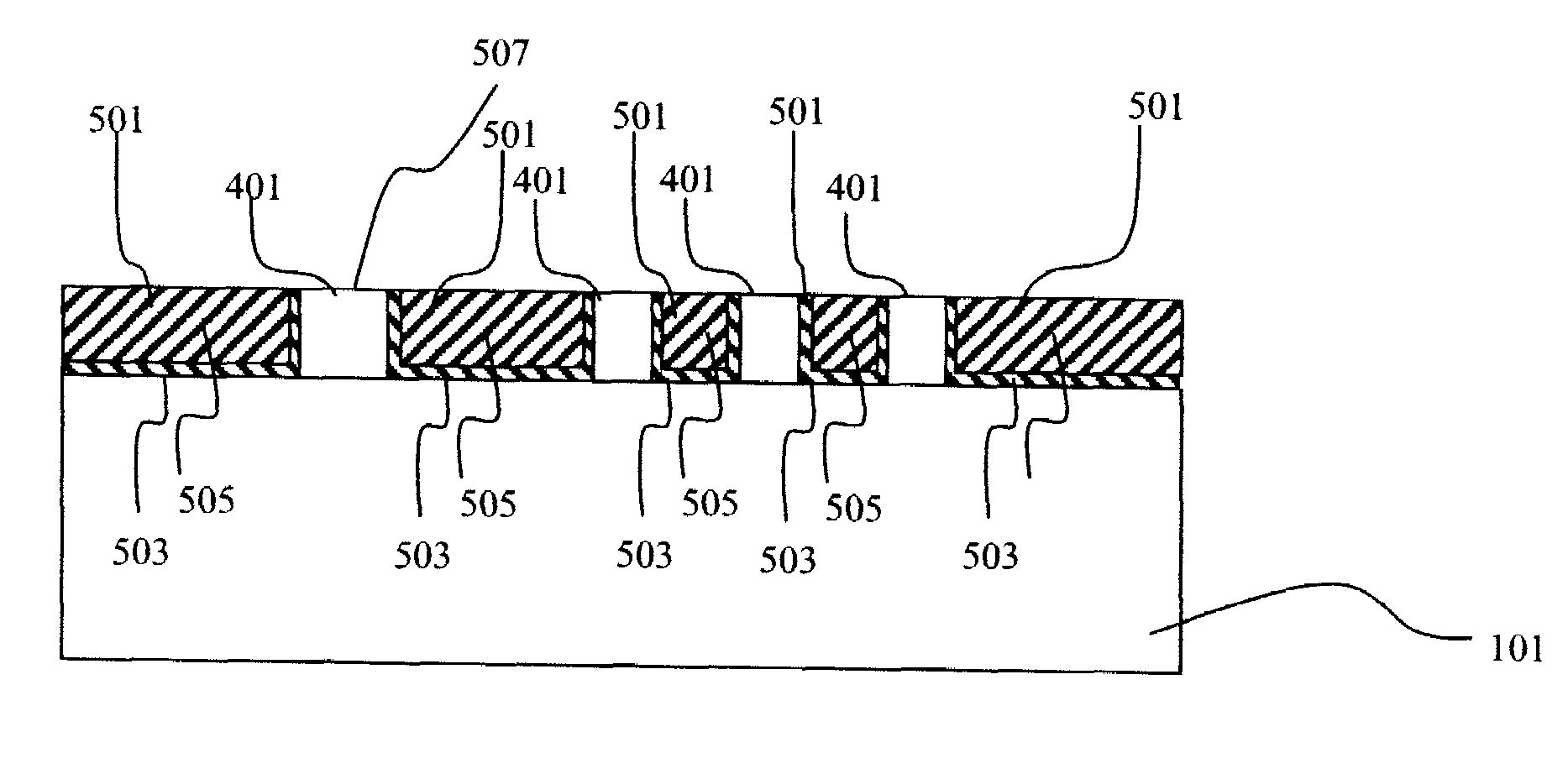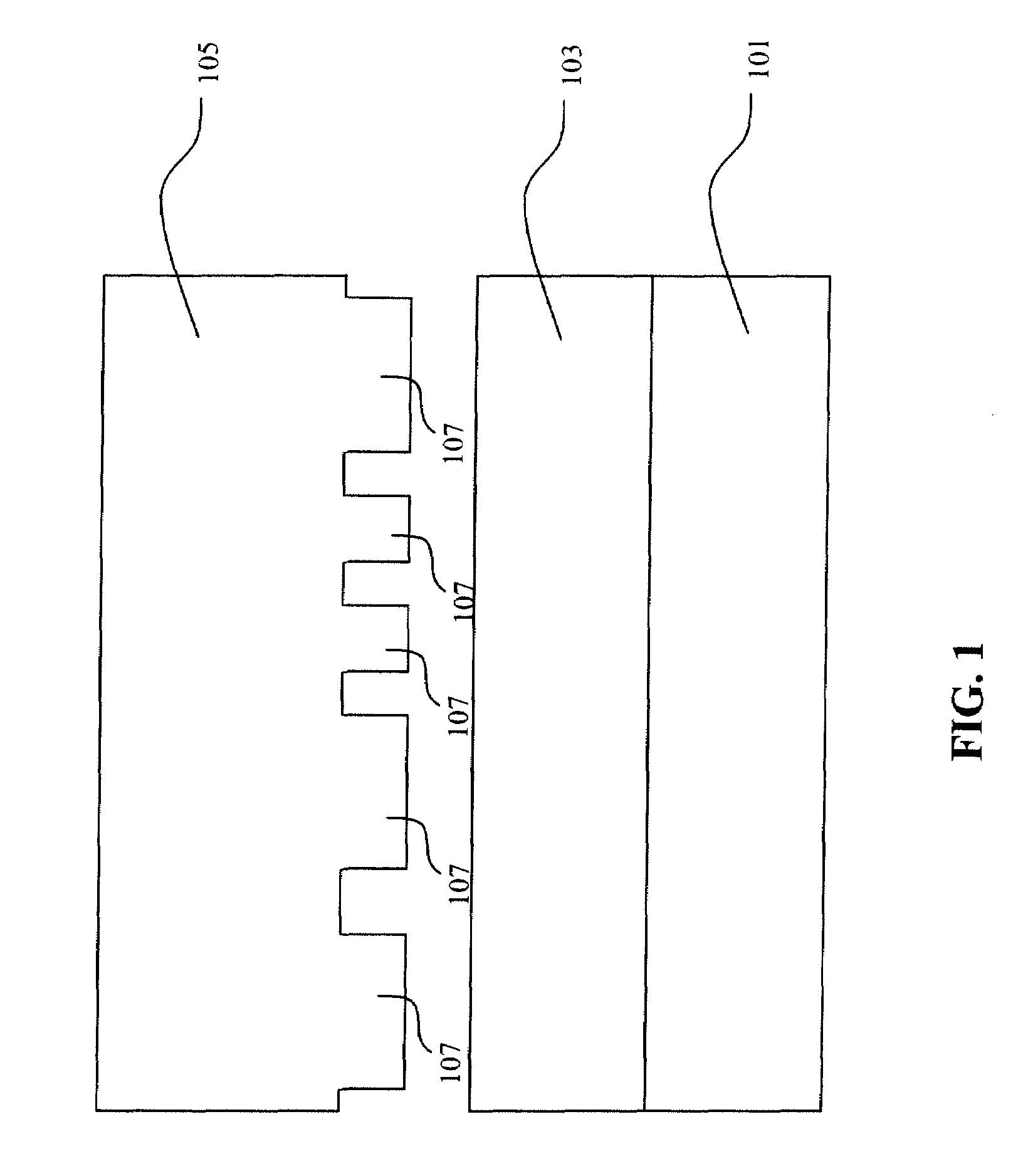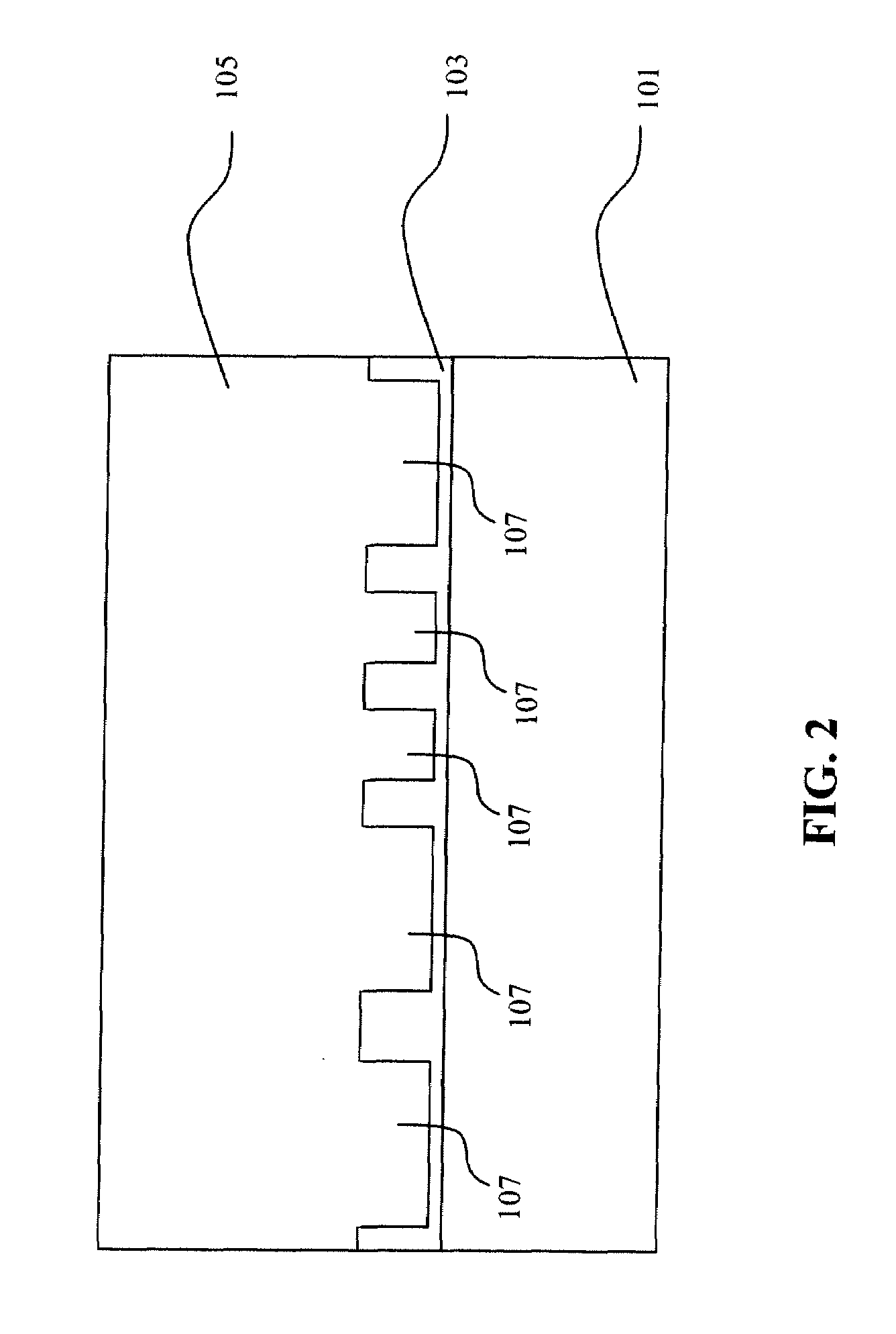Photoimprintable Low Dielectric Constant Material and Method for Making and Using Same
a dielectric constant, low-dielectric technology, applied in the direction of photomechanical equipment, circuit masks, instruments, etc., can solve the problems of time-consuming, expensive, and inability to meet the requirements of the device, and achieve the effect of reducing the cost of production and production
- Summary
- Abstract
- Description
- Claims
- Application Information
AI Technical Summary
Problems solved by technology
Method used
Image
Examples
example 1
Low-Solvent Photodefinable Film Containing PAG
[0062]In Example 1, a film-forming composition was prepared containing the following: 18.0 grams of MTES as the silica source, 2.0 g of ethanol, 4.4 grams of the PAG (Bis(4-tert-butylphenyl)iodonium) triflate, and 6 grams of water. The composition was aged for 3 days and then the composition was partially polymerized by heating the composition to a temperature of 50° C. under vacuum to remove excess water and ethanol present from silicate hydrolysis. The viscosity of the aged and partially polymerized material was measured. The viscosity of the aged material was an average of 69cP when measured using a Brookfield viscometer at 25° C. at 100 rpm and torque of 2.8%. The resultant composition is suitable, for example, for spin casting onto substrate or ink jet printing onto substrates.
example 2
Low-Solvent Photodefinable Film Containing PAG
[0063]In Example 2, a film-forming composition was prepared containing the following: 18.0 grams of MTES as the silica source, 2.7 g of ethanol, 4.4 grams of the PAG (Bis(4-tert-butylphenyl)iodonium) triflate, and 6 grams of water. The composition was aged for 6 days. Thereafter, the composition was partially polymerized by heating the composition to a temperature of 50° C. under vacuum to remove excess water and ethanol present from silicate hydrolysis. The viscosity of the aged and partially polymerized material was an average of 69 cP when tested at the same conditions as in Example 1. This solution was diluted with propylene glycol propyl ether (PGPE) and the solution spun onto a low resistivity silicon substrate, wherein the material was exposed to broad band UV radiation for 10 sec. The broad band ultraviolet light source referred to herein is manufactured by Fusion Systems using a “D” bulb, for 5 second. The films were baked at 90...
example 3
Low-Solvent Photodefinable Film Containing PAG and Porogen
[0066]In Example 3, a film-forming composition was prepared containing the following: 18.0 grams of MTES as the silica source, 2.0 grams of ethanol, 0.42 grams of the PAG (Bis(4-tert-butylphenyl)iodonium) triflate, 4.0 grams of Triton X-114 and 6 grams of water. The composition was aged 6 days. Thereafter, the composition was partially polymerized to remove excess water and ethanol present from silicate hydrolysis. Using a Model DVII Brookfield viscometer at 25° C. and a # 34 spindle, a viscosity of 76-90 cP was measured at 50 rpm using a torque of 0.7%. This solution was diluted with PGPE and the solution spun onto a low resistivity silicon substrate, wherein the material was exposed to broad band UV radiation using the source described above in Example 2 for 10 seconds. The films were baked at 90° C. for 90 seconds, with a second bake performed at 180° C. for 90 seconds and a third bake was performed at 250° C. for 90 secon...
PUM
| Property | Measurement | Unit |
|---|---|---|
| dielectric constant | aaaaa | aaaaa |
| molar ratio | aaaaa | aaaaa |
| viscosity | aaaaa | aaaaa |
Abstract
Description
Claims
Application Information
 Login to View More
Login to View More - R&D
- Intellectual Property
- Life Sciences
- Materials
- Tech Scout
- Unparalleled Data Quality
- Higher Quality Content
- 60% Fewer Hallucinations
Browse by: Latest US Patents, China's latest patents, Technical Efficacy Thesaurus, Application Domain, Technology Topic, Popular Technical Reports.
© 2025 PatSnap. All rights reserved.Legal|Privacy policy|Modern Slavery Act Transparency Statement|Sitemap|About US| Contact US: help@patsnap.com



